|
The World Health Organization has identified vaccine hesitancy as a leading global health threat, which left unchecked could lengthen the duration of the COVID-19 pandemic. The United States is far ahead of most nations in vaccinating its population. But even the Centers for Disease Control and Prevention recognizes that reaching herd immunity is no longer a realistic goal. The best hope to mitigate the consequences of the pandemic is to get as many people as possible vaccinated, within the shortest period of time. President Biden has a goal of getting at least 70% of the adults in the U.S. vaccinated with at least one shot by the 4th of July. This should be achievable, but it won’t be easy. To date about 64% of adults have received at least one COVID shot. But the pool of adults willing and able to get vaccinated is shrinking. Lack of access and misinformation are leading to vaccine hesitancy and outright refusal to get the shot. Lack of access to the vaccine in certain populations is a big challenge, but one that can be overcome with time and resources. Reaching the homeless, migrant workers, shut-ins, and isolated rural communities present logistical challenges. The more difficult challenge will be to overcome all the misinformation out there and get through to those refusing to get vaccinated. Who is Hesitant about Getting Vaccinated: The Kaiser Family Foundation COVID-19 vaccine tracking poll tracks vaccination rates and behavioral attitudes towards vaccinations among various demographic groups, https://www.kff.org/coronavirus-covid-19/dashboard/kff-covid-19-vaccine-monitor-dashboard/?gclid=EAIaIQobChMI_qiK1aGI8QIVIPHjBx2Ejw5SEAAYAiAAEgJt2fD_BwE. Here is some of the latest data on adult vaccination rates in the U.S.:
The people in the last two groups, making up 20% of the adult population in the U.S., are considered “hesitant” about getting the vaccine. This hesitant group tends to be younger, Republican, and from rural communities. Here is the breakdown for these groups: Group Hesitant or Outright Skeptical Ages 30-49 28% Republicans 36% From Rural Areas 27% The most significant determinant among all groups, including race and gender, was the level of education. Working class members of every demographic group are less likely to be vaccinated and are hesitant to do so. People with a college degree are twice as likely to be vaccinated than those without a degree. Nearly 25% of all adults without a college degree fall into the vaccine hesitancy group. People in the “wait and see” group tend to be the young and people of color. Reasons for Vaccine Hesitancy: To overcome vaccine hesitancy it is important to understand the root causes. The predominate cause is misinformation, but here is a partial list of other reasons.
Overcoming Vaccine Hesitancy
Here are some other messaging points put together by Sherita Hill Golden, MD, Professor of Medicine at Johns Hopkins, to assist in overcoming vaccine misinformation:
Consequences of Not Getting Vaccinated
Getting a COVID-19 vaccine is a very personal choice, and although I believe that most adults should get vaccinated, it should not be forced upon them. There are some very legitimate reasons for some people not to get vaccinated, such as deeply held religious beliefs and some underlying medical conditions. For the benefit of the community, the country and the world, all people eligible to receive the vaccine should, for the common good. There was a strong consistent message when the polio vaccine was introduced in the 1950s. It gained widespread acceptance under the banner “we’re all in this together”. Will this message resonate in our polarized world? Let’s hope and pray that it does.
Update July 13,2021: The pandemic is far from over, but you wouldn’t know it by walking down the streets of most American cities. The world recently surpassed the grim milestone of 4,000,000 deaths due to COVID-19. This was the official death toll, but the actual death toll is certainly much higher. Approximately 25% of the world’s adult population has received at least one shot of COVID-19 vaccine, mostly in the rich countries. Less than 1% of the adults in low- income countries (Africa, Asia, South America, Central America) have received a single shot of the vaccine. On June 15th the U.S. surpassed 600,000 deaths due to COVID-19, and the death rate continues to climb, mainly among those who have been unvaccinated. President Biden missed his July 4th goal of getting 70% of eligible adults vaccinated with at least one shot. As of this writing just under 68% of adults have received at least one shot. COVID-19 cases have come down significantly in the U.S. over the past few months due to the highly effective vaccines. As a result, most areas of the country have dropped all COVID-19 related restrictions. Mask mandates, social gathering restrictions, and indoor business restrictions have disappeared, and domestic travel has returned with a vengeance. But this rosy picture hides vast geographic disparities which show a significant rise in hospitalization rates and deaths due to COVID-19 in regions with low vaccination rates. Rural areas, which tend to be conservative, have seen a recent rise in COVID-19 cases. Low vaccination rates make these populations vulnerable to the highly contagious Delta variant. Arkansas and Missouri are seeing the worst outbreaks, followed by Florida, Nevada, Wyoming, and Utah. But unvaccinated people are driving increases in COVID-19 cases even in areas with high vaccination rates. This corresponds with the lowering (or elimination) of COVID restrictions and the emergence of the Delta variant. I live in a county north of San Francisco, where 68% of eligible people are fully vaccinated and another 8% are partially vaccinated. But there has been a troubling uptick in COVID-19 cases and hospitalizations, even before the full effects of 4th of July gatherings are felt. The vast majority of the hospitalized COVID-19 patients are unvaccinated. Contact tracing has shown that most of the current COVID-19 cases in my county are being fueled by social gatherings and leisure time activities, with the highest rates in the 18-32 age group. Vaccine hesitancy continues to align significantly with party affiliation. According to a recent Washington Post-ABC News poll, 6% of Democrats said they are not likely to get vaccinated, compared with 47% of Republicans, including 38% of Republicans who said they definitely will not get the vaccine https://www.washingtonpost.com/politics/post-abc-poll-biden/2021/07/03/54e95b6e-db43-11eb-8fb8-aea56b785b00_story.html. First detected in India, the Delta variant is estimated to be 60% more transmissible than earlier variants. The Delta variant has rapidly spread around the globe and is currently driving COVID-19 outbreaks in African, Asia, Australia and South America. The CDC has determined that the Delta variant is now dominant in the U.S. and is spreading rapidly in unvaccinated populations. Researchers in France, Israel and Britain have shown that a single dose of the Pfizer or AstraZeneca vaccine is largely ineffective against the Delta variant. Therefore, delaying the second shot in order to vaccinate more people is no longer an effective option. New variants, like the Lambda variant spreading rapidly in South America, provide more reason to quicken the pace of vaccination around the world. The unvaccinated population provides a breeding ground for new variants, and short of shutting down the world, vaccines are our only real defense. Pfizer made news last week by announcing that it would seek FDA approval for a COVID-19 booster vaccine. The CDC and NIH strongly rejected the need for vaccine boosters at this time, refuting the claims made by Pfizer. But many in the scientific community acknowledge that it is not a matter of if, but when booster shots will be needed. Preliminary research out of Israel suggests that the Pfizer vaccine is less effective against the Delta variant and there is a decline in antibody levels against the virus over time. I think that we should be prepared for the eventuality of booster shots, but we need to think through the ethical issues involved. Is it ethical to provide booster shots to fully vaccinated people in wealthy countries when the vast majority of people in poorer countries remain unvaccinated? Israel plans to offer booster shots of the Pfizer vaccine to adults with weakened immune systems, and Britain has announced plans to provide booster shots to its vulnerable populations and front-line workers. It makes sense to protect our most vulnerable, but it seems premature to do so when there is a limited supply of vaccines. The FDA warned this week that the Johnson & Johnson COVID-19 vaccine can lead to an increased risk of Guillain-Barré syndrome, a rare neurological condition. The incidence is very rare, and the benefits of this highly effective vaccine outweigh the risks. But I fear that this warning from the FDA will further diminish the acceptance of this much needed vaccine. The vast majority of hospitalizations and deaths due to COVID-19 are occurring in unvaccinated people. The evidence is overwhelming. Unvaccinated people pose a risk to themselves and to vulnerable populations who have been vaccinated. No vaccine is 100% effective and breakthrough infections do occur. The incidence of COVID-19 is eleven times higher in unvaccinated people than vaccinated ones. If that isn’t an incentive to get vaccinated, I don’t know what is. Encourage everyone you know to get vaccinated. Regarding the use of face masks, do like I do, don’t leave home without one. If you enjoy reading this type of commentary please subscribe to my blog and tell a friend. You will receive an email notification when new blogs are posted. The email will come from the site’s email: armchairamerican1776 @gmail.com. Thanks, Armchair American
0 Comments
Leave a Reply. |
AuthorThe Armchair American. Archives
November 2024
Categories
All
|

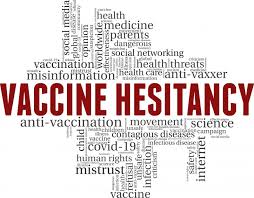
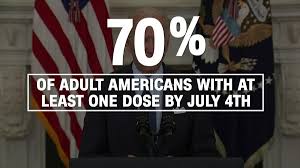


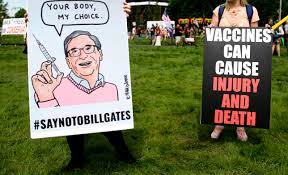
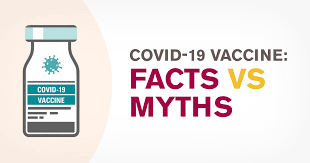


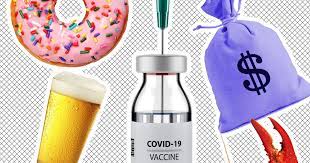
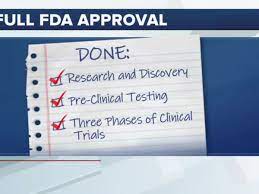
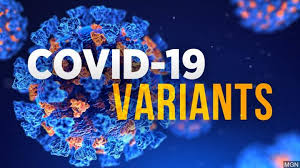




 RSS Feed
RSS Feed